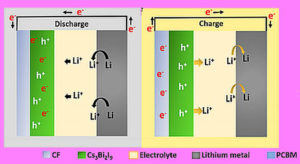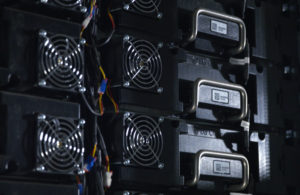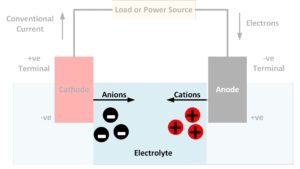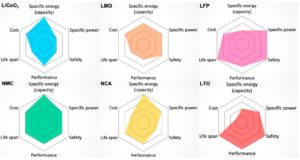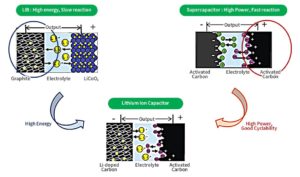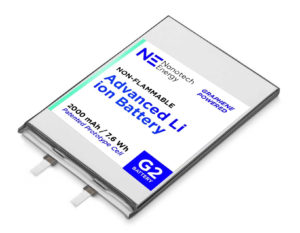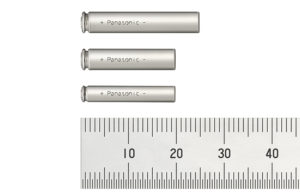A group of researchers at the Hong Kong University of Science and Technology have come up with a coin cell that uses lead-free, bismuth-based, all-inorganic halide perovskite as an anode which also incorporates a photovoltaic cell to recharge itself. Writing in the June 2021 journal Nano Letters, the group says they developed a perovskite that…
World’s largest lithium battery bank grows even larger with 400-MWh addition
The world’s largest lithium-based energy storage facility has just gotten a little bigger. Construction of Phase II of the Moss Landing Energy Storage Facility in California is now complete, adding 100 MW/400 MWh to the site, which now reaches 400 MW/1,600 MWh in total. “This facility provides a solution California desperately needs and this expansion was…
What is an electrolyte?
The electrolyte in a battery is the substance that allows electrical current to flow between the anode and the cathode. Electrolytes may be fluids or solids. Soluble salts, acids, and bases can generally act as electrolytes. While current flows through a metallic conductor in the form of lone electrons, within an electrolyte current flows in…
The difference between lithium ion and lithium polymer batteries
A lithium-ion polymer (LiPo) battery (also known as Li-poly, lithium-poly, PLiON, and other names) is a rechargeable Li-ion battery with a polymer electrolyte in the liquid electrolyte used in conventional Li-ion batteries. There are a variety of LiPo chemistries available. All use a high conductivity gel polymer as the electrolyte. LiPos provide higher specific energies…
The difference between a lithium-ion battery and a lithium-ion capacitor
A lithium-ion capacitor (LIC) is a type of supercapacitor. It’s a hybrid between a Li-ion battery and an electric double-layer supercapacitor (ELDC). The cathode is activated carbon, the same as is found in an ELDC, while the anode consists of carbon material pre-doped with lithium ions, similar to those found in Li-ion batteries. LICs are…
Sager Electronics now shipping Power Sonic’s lithium batteries
Sager Electronics is now stocking Power Sonic’s PSL-SC Series lithium batteries. The Power Sonic PSL-SC range delivers a lithium battery that lasts longer, weighs less, and charges quicker than the equivalent lead-acid battery. The PSL-SC series features an intelligent battery management system that monitors and reacts to multiple voltages, current, and temperature events to maximize performance, […]
Non-flammable, efficient and fast-charging lithium-ion 18650 batteries in mass production Q1 2021
Nanotech Energy Inc. announced that beginning in the first quarter of 2021, the company will mass produce non-flammable, efficient, and fast-charging lithium-ion 18650 Batteries. These cell-type batteries are used in devices including, but not limited to, laptop computers, cordless power tools, safer electric vehicles, telecommunications, aerospace, and military applications. The Company has begun taking pre-orders. […]
Lithium-ion coin cells operate up to 105°C
NGK INSULATORS (hereinafter “NGK”) has raised the maximum operating temperature of its coin-type “EnerCera Coin” (part of the “EnerCera” series) battery up to 105°C. Sample shipments are currently underway, with mass production scheduled to begin in September 2020. In December 2019, NGK developed the world’s first lithium-ion rechargeable battery which has achieved an operating temperature […]
Panasonic unveils new lithium ion pin batteries for wearables
Panasonic Industrial Devices Sales Co. of America recently announced a new addition to its line of lithium-ion pin cells for the wearables market. The Panasonic CG420A lithium-ion pin batteries have a spiral-wound construction that enables higher reliability and rapid charging (80% charged in 20 minutes), according to Panasonic. The company says the batteries, which are…
Lithium-water rechargeable batteries said to be safer, more energy dense than lithium-ion
A new high-performance Lithium-water (Li-water) rechargeable battery technology has been developed for the energy storage and mobile device markets. According to co-developers Global Technology Systems, Inc. (GTS) and Dr. Boris Tsenter, the new Lithium-water technology will be safer, with longer run times and lower environmental impact than traditional Lithium-ion battery technology. The technology is expected […]

